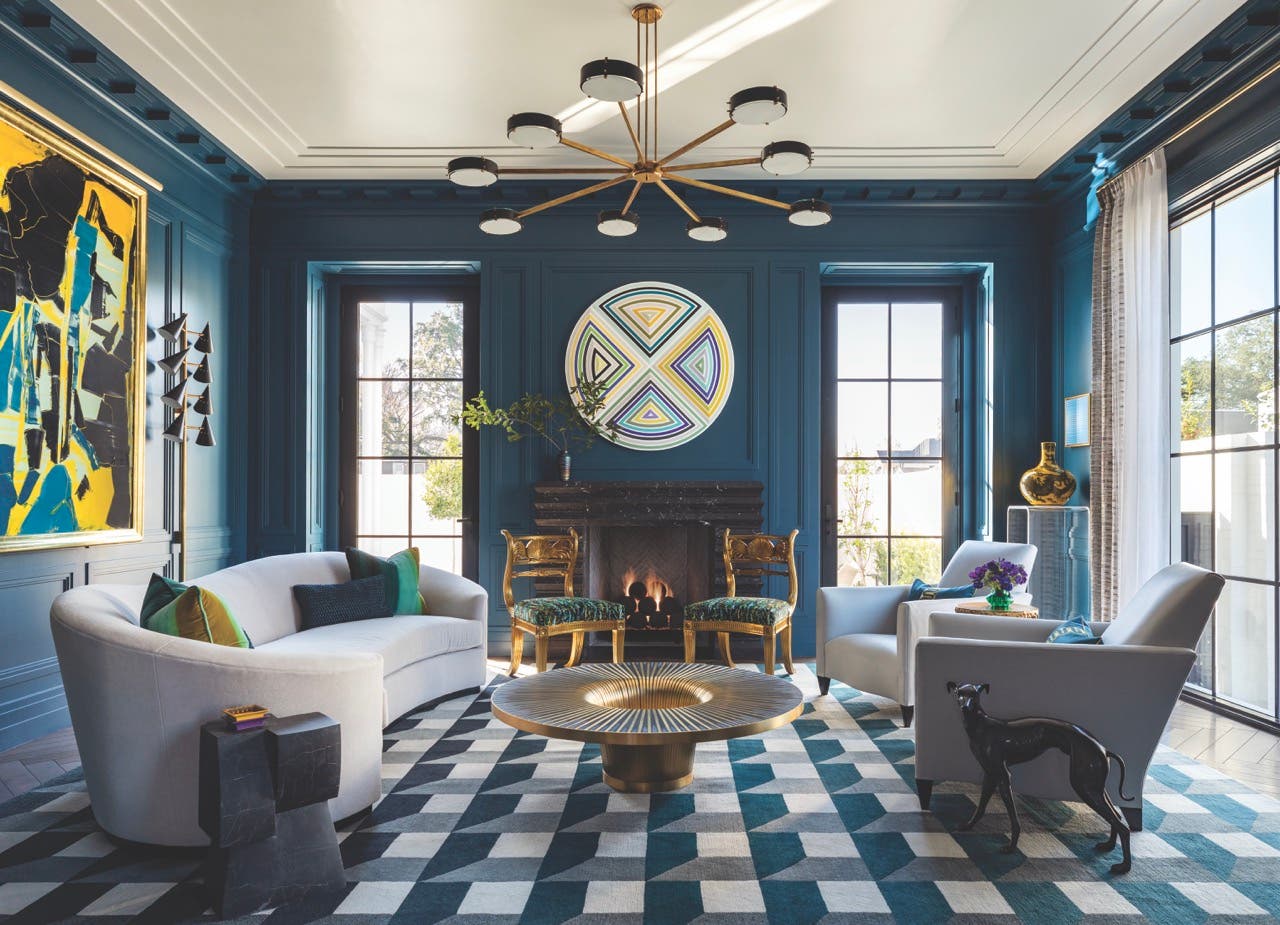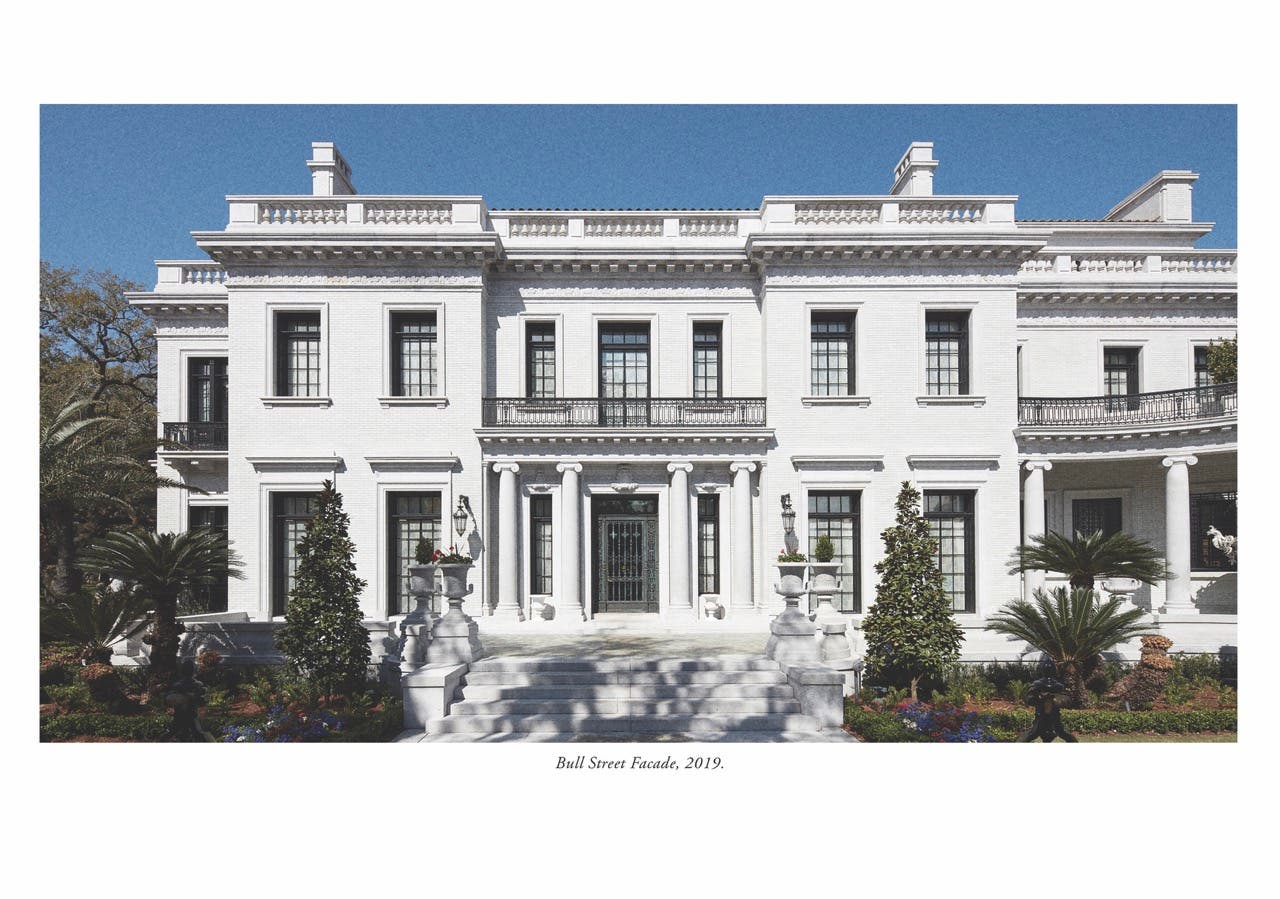
2025 Palladio Awards
The American Boathouse – Schafer Buccellato Architects
The mezzanine overlooks the great
room and boat slip beyond.
For more than a century, Maine’s American Boathouse has been a harbor icon. One of the oldest surviving examples in the country, it is on the National Register of Historic Places.
Since it was built in 1904 as a repository for the yachts of the scion of a wealthy Chicago family, the building has been used for a variety of purposes. But, until a local couple recently bought it, it had never been a residence. Through the decades, it had fallen into disrepair and disuse.
“It was a chaotic ruin,” says Gil Schafer, a founding partner of the New York City-based firm of Schafer Buccellato Architects. “Used most recently as a boat builder’s shop, it looked like a boat builder’s hoarder’s paradise.”
The prospect of converting it to living quarters was, he says, “a thrilling—and terrifying—prospect. Water, of course, is the enemy of architecture.”

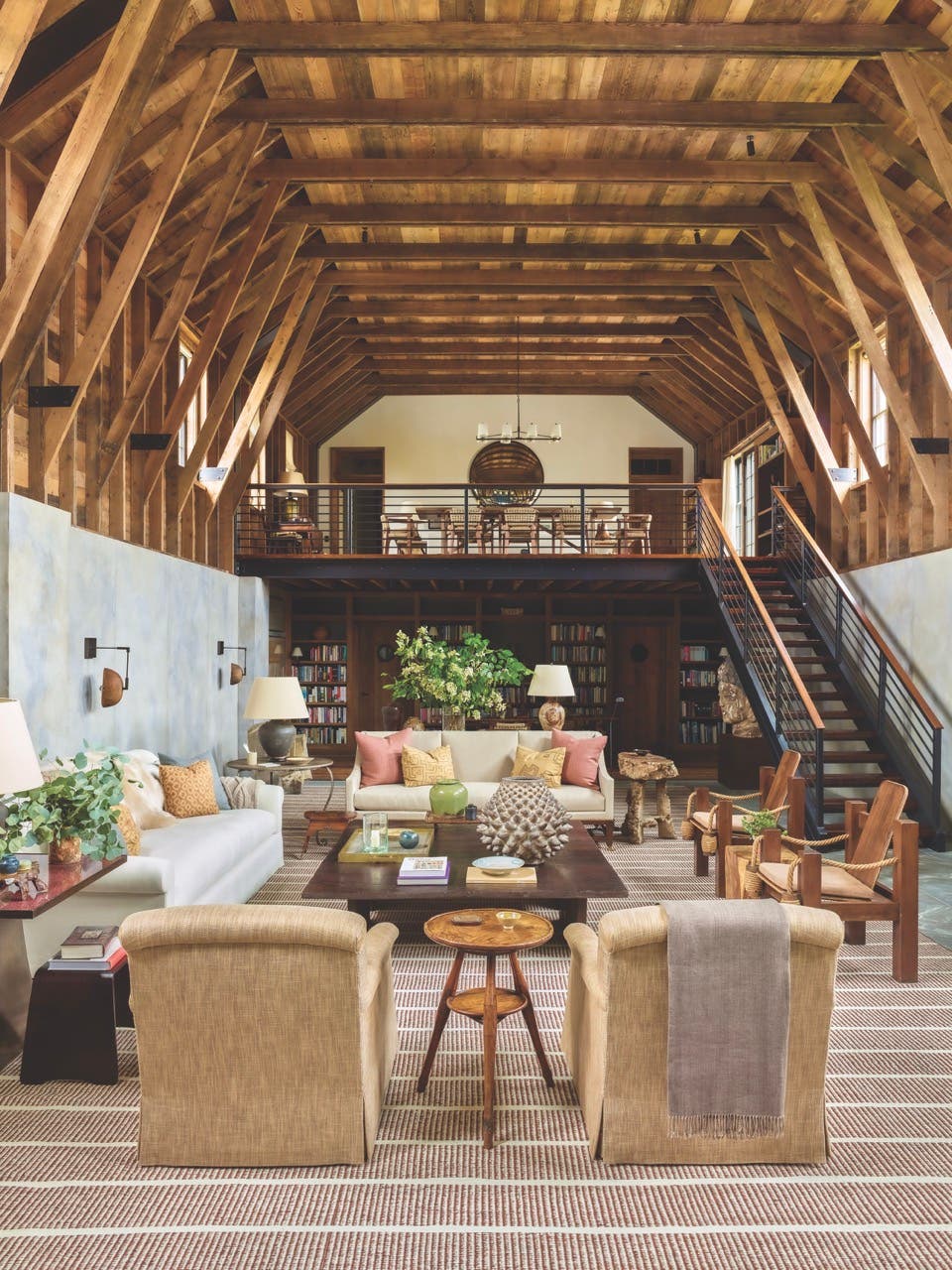

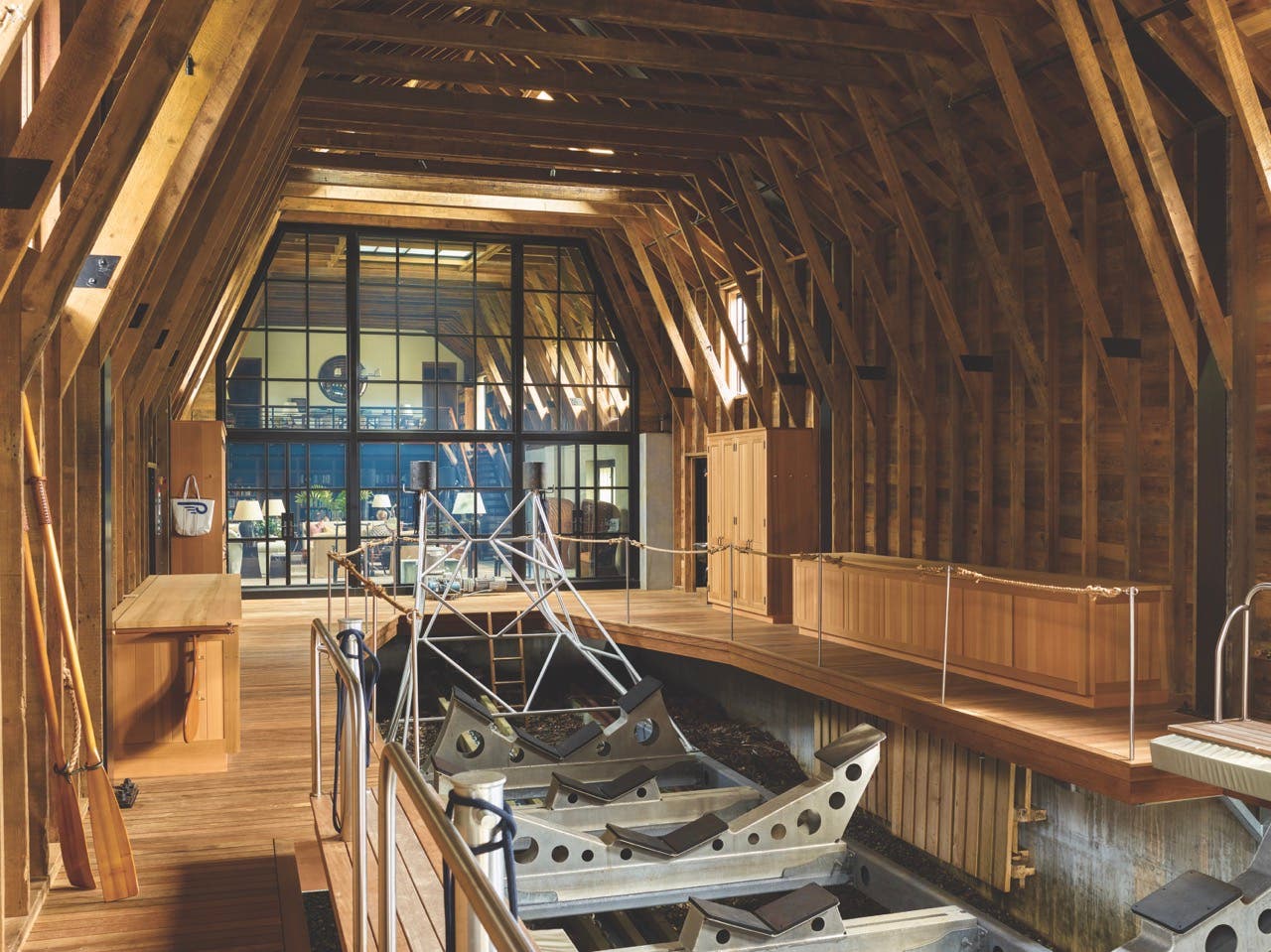
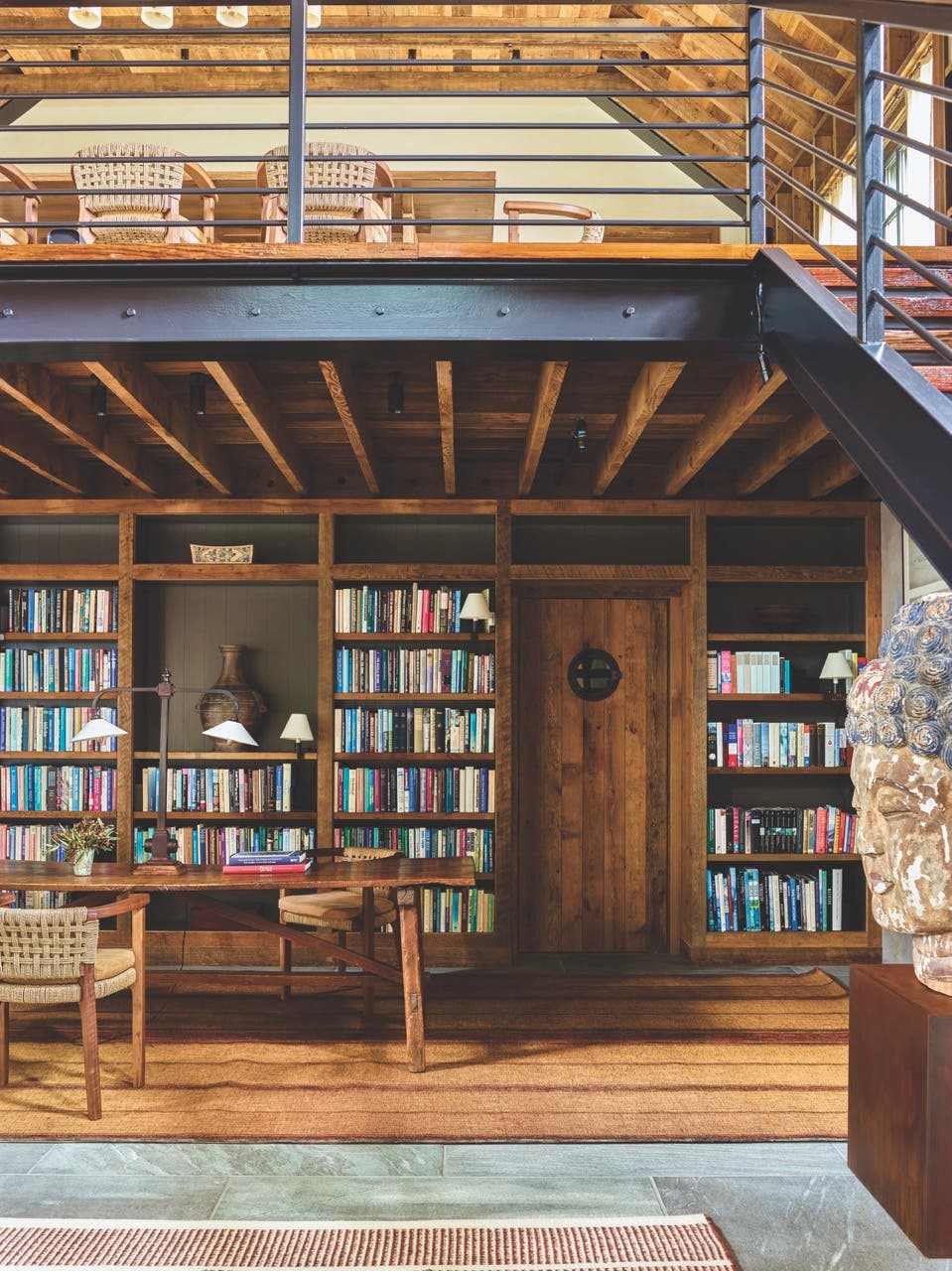
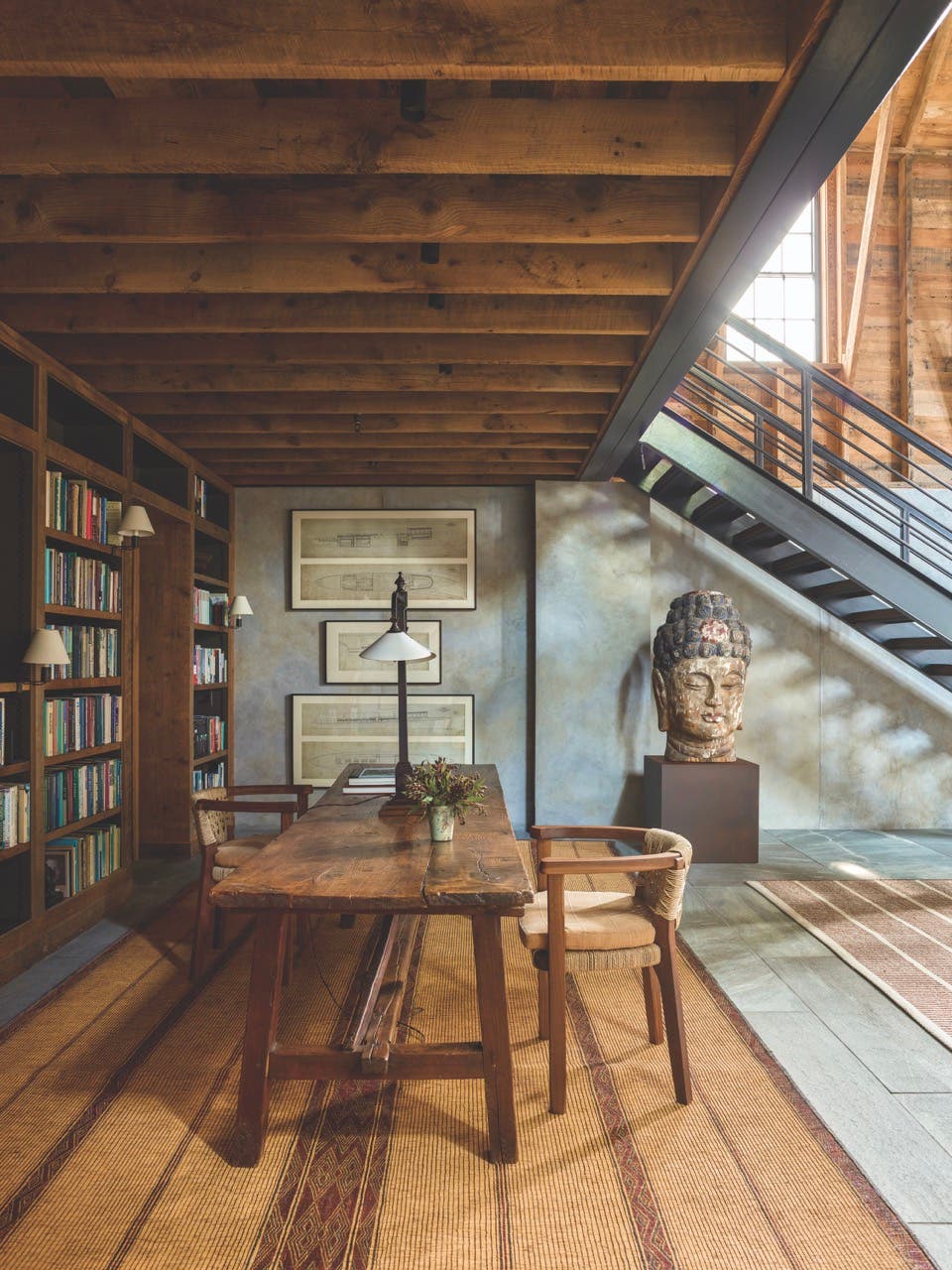
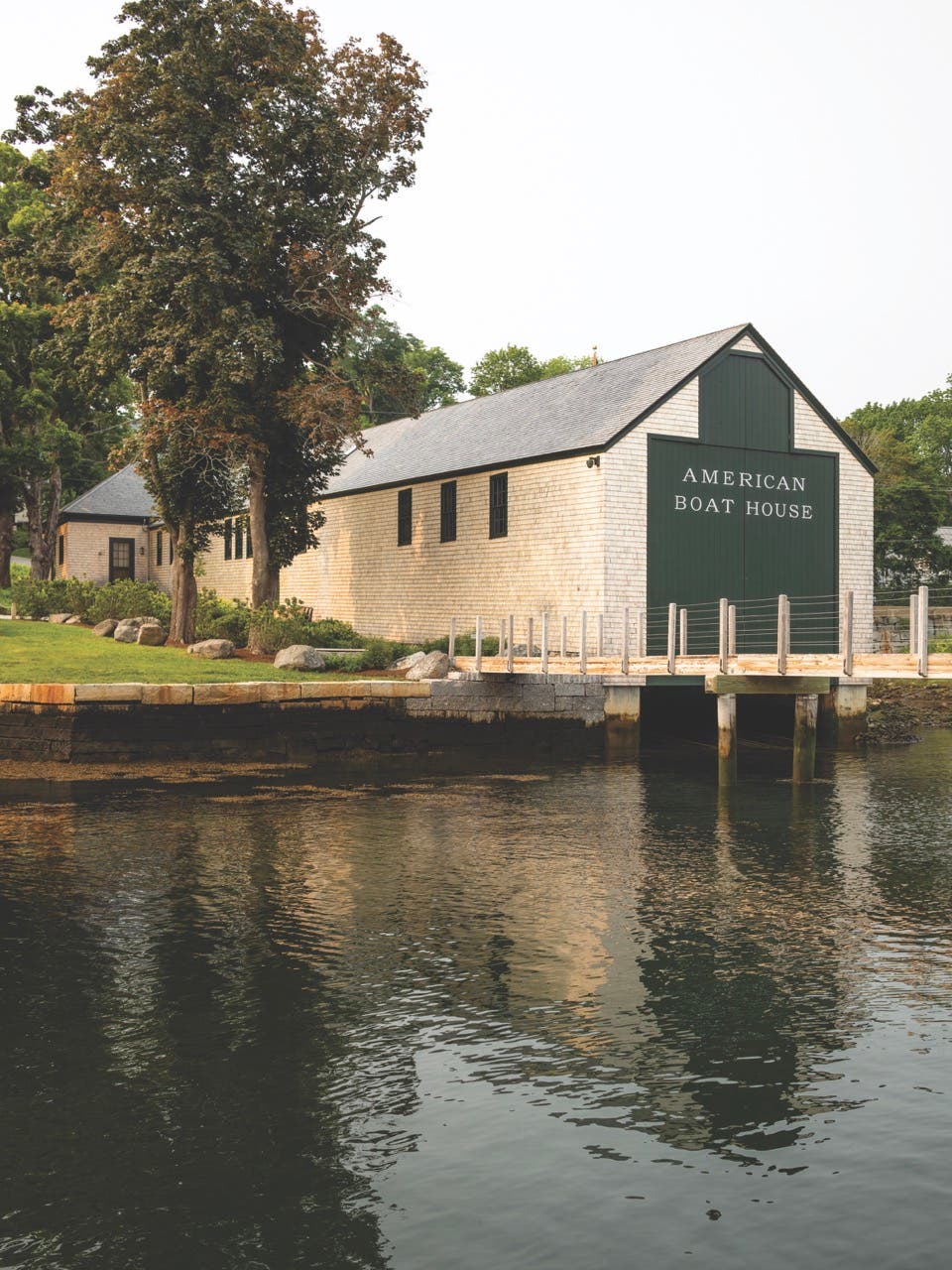

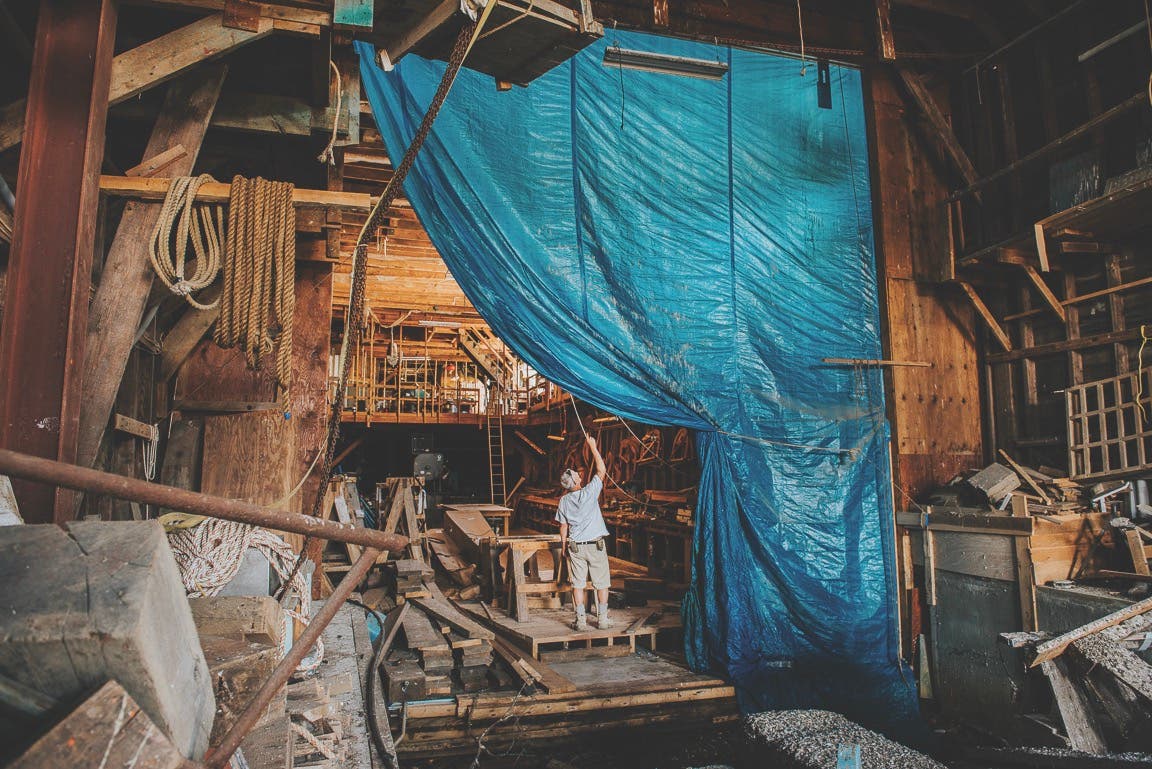
The forward-thinking clients envisioned restoring the boathouse to its original grandeur, interpreted through today’s design lens, with half the space functioning as a boat basin and the rest as a guest residence and place for entertaining.
Because of its historic status, the exterior of the boathouse could not be altered. The building’s size, 3,700 square feet, was retained, and its ridgelines, roof forms, foundation, fenestration, and other details were restored and reconstructed using salvaged and re-used building material wherever possible.
Schafer and his team used the landmark restrictions to their advantage, skillfully incorporating doors and windows into the design.
In the new galley kitchen, for example, a glazed exterior door from the original facade was transformed into a window, disguising its external appearance. And the large window in the bathroom, which faces the street, was outfitted with a series of pocketing louvered panels that open and close; an etched pocket window provides extra privacy.
Although the boathouse is deeply rooted in the past, it also is technologically sophisticated. The latest mechanical systems were incorporated, but they are cleverly concealed in the historic architecture.
The interiors, which were not subject to landmarks restrictions, were transformed into living spaces.
“We took great care to preserve the architectural character of the original interior,” Schafer says. “This was accomplished by salvaging as much of the original interior woodwork as possible and reusing it in the restored interior and matching it with reclaimed beams and boards of a similar species—in this case hemlock—wherever new wood was required.”
The upper level of the boathouse contains a bedroom and bath, a kitchenette, and sitting and dining areas.
A library alcove, tucked under the mezzanine like a baby in a blanket, features books collected by the owners and millwork from the same reclaimed hemlock as the rest of the interior.
Most of the lower level is devoted to the great room, which features a 25-foot-high glass wall that opens to the owner’s Hinckley picnic boat, which rests in a boat basin just beyond the glazing, where it’s on full view when it’s not on the water.
“We didn’t want to cut the space in half with a wall,” Schafer says. “With the glass wall, you never lose the feeling of the full length of the boathouse, and it becomes a cathedral-like space. You can look into the harbor from the mezzanine. The wall is waterproof, and the doors in it are raised off the ground just like they would be in a ship so the water doesn’t flow in.”
To channel the serene feeling of waving water, the interior spaces are clad in highly textured muted solid colors that don’t upstage the architecture of the boathouse.
Although there’s not a lot of art, the team dug up the drawings of the yachts commissioned by the original owner of the boathouse, scanned them and framed them. They are paired with the boathouse’s original winch mechanism, which was restored and placed on view in a museum-style glass vitrine room on the lower level, which includes a wet bar.
“The sophisticated palette and creative use of natural materials, including concrete, steel, salvaged antique wood beam work and walls, and granite floors, together enclose a sort of modern cabinet of curiosities, filled with collections and personal pieces gathered on our clients’ travels over their lifetimes,” Schafer says.
The result is a refined residence that on the outside looks exactly as it did at the beginning of the 20th century but whose interior reflects the 21st-century lifestyle of the owners. TB
| Key Suppliers |
|---|
| Architect Schafer Buccellato Architects Project Partner and Landscape Architects Mohr & Seredin Landscape Architects General Contractor Cold Mountain Builders Structural Engineer Albert Putnam Associates Mechanical/Electrical/Plumbing/Fire Protection Engineer J.H. McPartland & Sons Envelope Engineer Building Science Corp. Electrical Contractor Wood’s Electric Lighting Orsman Design Interior Finishing ConcreteStudio7 of I-Faux Plaster Finishing Domingue Architectural Finishes Window manufacturer (Steel) Reilly Architectural Window manufacturer (Wood) Little Harbor Window |




